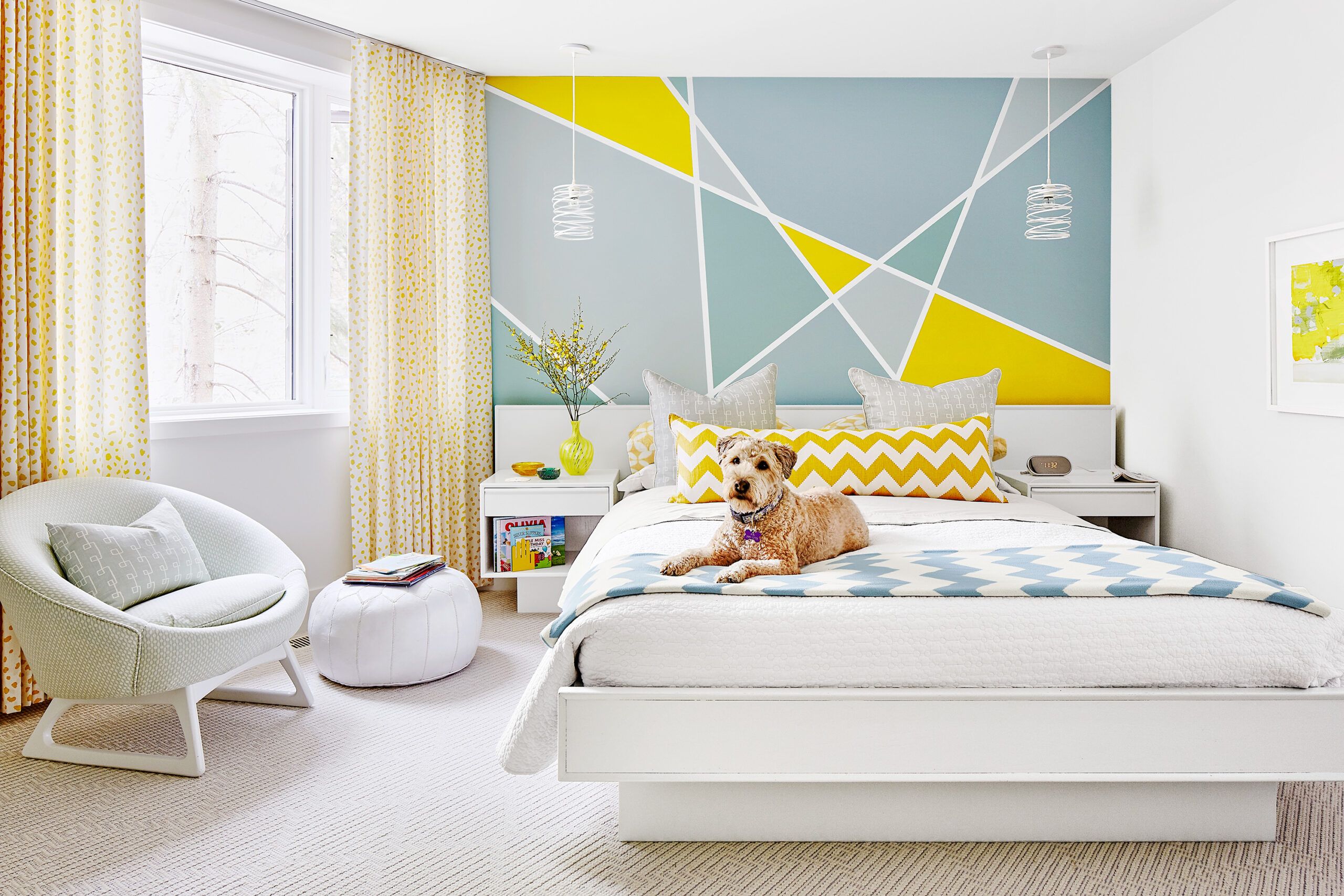Geometric patterns can add personality to your bedroom walls, and the options are endless — from simple stripes to mind-boggling honeycomb hexagons. With some basic tools, a bit of patience, and a healthy dose of creativity, you can achieve a professional-looking result that will turn your space into a conversation piece.
Choosing Your Geometric Pattern
Simple patterns can add a modern touch, while more complex designs might suit a bold and eclectic space. The more complex your design is, the more time and effort taping it out on the wall will take.
The beauty of the planning process is that you can experiment with different layouts before finalizing your design. “It takes minutes to tape it up,” says designer Sarah Richardson, “and you can instantly see if you like the design before committing time and paint to making it permanent.”
Once you’ve chosen a shape, your next step is to choose the color palette. If you choose different shades of the same color family, the colors can complement your existing decor. You can also make a bold statement with color combinations that pop.
Tools and Materials for Geometric Wall Painting
The type of paint and tape you use can make all the difference in your design.
Painter’s Tape
Painter’s tape creates your pattern’s clean, sharp lines. Choose a high-quality tape designed for delicate surfaces so it won’t damage your wall when removed. For most projects, a 1- or 1 ½-inch wide tape works well, but complex patterns with multiple line thicknesses may need more sizes of tape.
Paint Selection and Preparation
Choose an interior paint that’s compatible with your base coat. Latex paints are typically the best choice for their durability and ease of cleanup. For a seamless finish, you can also use paint with built-in primer or separate primer before your base coat.
How to Create a Geometric Pattern
Follow these steps to bring your geometric wall pattern to life.
Preparing Your Wall Surface
Start with a clean, smooth wall surface. Fill holes or cracks with spackle, then sand smooth. If your pattern uses a different background color, apply the base coat and let it dry for at least 24 hours before you start taping.
Mapping Out Your Design
Use a pencil to lightly sketch where the tape will go on your wall. For more complex designs, a level or laser level can help you keep straight lines and consistent angles. Always double-check your measurements to prevent errors that could disrupt the pattern’s symmetry.
Applying Painter’s Tape
Carefully apply painter’s tape along your sketch lines, and press the edges down firmly to prevent paint bleeding through. Trim the tape where lines meet using a sharp utility knife.
Painting Your Pattern
Once everything is taped to perfection, it’s time to paint within the areas. Apply thin, even coats to prevent drips — you may need two or three coats for best results. Allow each coat to dry completely before moving to the next one.
Removing Tape and Touching Up
Once the paint is completely dry (usually after 24 hours), remove the tape at a 45-degree angle to prevent peeling. Use a small brush to touch up any imperfections or bleeding edges.
Troubleshooting Common Issues in Geometric Wall Painting
Even with careful planning, challenges can still get in the way of your painting project. Here are some common ones you might encounter.
Uneven Surfaces
If your wall is textured or has slight imperfections, use a higher-quality painter’s tape designed for textured surfaces. Apply extra pressure along the tape edges to ensure a good seal. For larger imperfections, consider skim-coating the wall before starting your project to create a smooth canvas.
Paint Bleeding and Imperfections
If paint is bleeding under the tape, wait for it to dry completely, then carefully scrape away the excess with a razor blade. For small imperfections, touch up the edges with a fine-tipped brush. If larger areas need correction, you may need to tape and repaint sections of the pattern.
Inconsistent Color Coverage
Inconsistent color coverage can detract from your pattern’s overall appearance. If you notice inconsistencies, add thin, evenly distributed coats until the colors are more consistent.
Geometric Patterns: Our Conclusion
Geometric patterns can give your bedroom wall a dramatic, professional-looking accent wall that reflects your personal style. Patience is key, so don’t be afraid to experiment with different designs and color combinations to find the perfect look.

